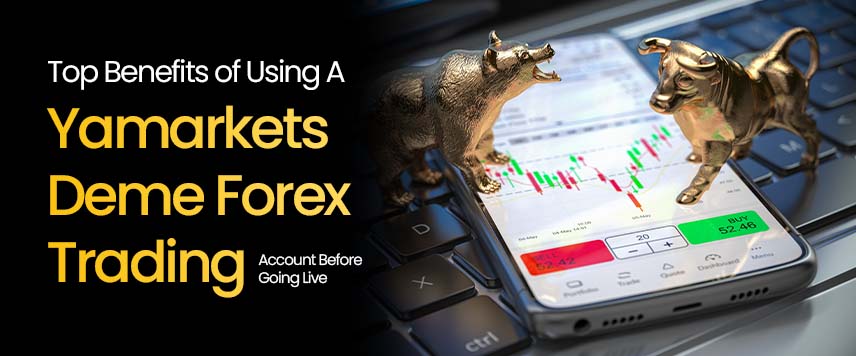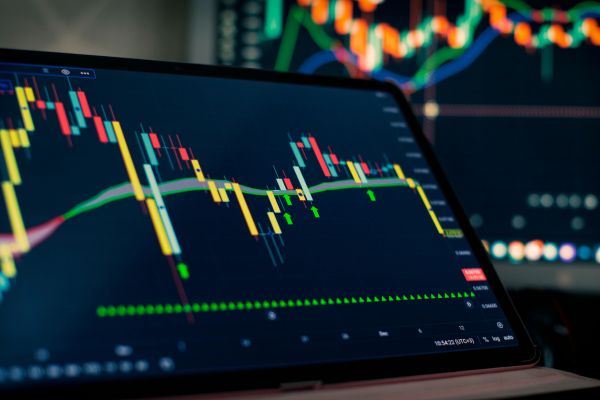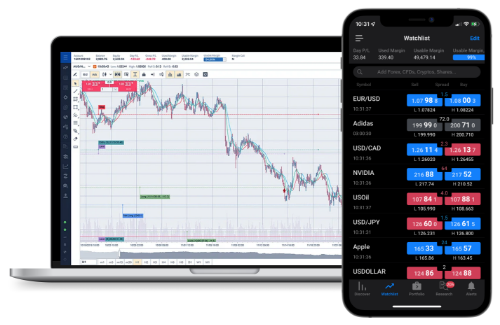I still remember the first time I opened a forex trading platform. Charts, candlesticks, indicators… it was like learning a new language. I didn’t want to risk a dime until I felt confident. That’s when I found out about demo accounts, and honestly, it changed everything for me.
Here’s the hard truth—jumping into live forex trading without practicing is like driving a race car on your first day of driving school. You might crash. You’ll definitely panic. But there’s a smarter way to start.
Demo accounts let you trade in real market conditions without using real money. That means no financial risk. You get to test, fail, learn, and improve before the stakes are real.
In this guide, I’ll walk you through everything I wish I knew when I started:
- What a forex demo account is and how it works
- Why every beginner should start with one
- The emotional traps demo accounts help you avoid
- When to go live—and how to know you’re ready
If you’re serious about forex trading, this could be your most important first step. Let’s make sure you start smart and risk-free.
What Is a Forex Demo Account?
A forex demo account is a trading account funded with virtual money. It looks and feels like a real trading platform, except you’re not risking your own cash. You can place trades, explore tools, and get familiar with how forex works.
I used MetaTrader 4 (MT4) for my demo account because it’s one of the most popular platforms out there. Many brokers offer it, and you can trade real-time market prices just like in a live account.

The biggest thing to know? **You’re practicing with fake money, but real data**. That makes it the perfect space to learn—without stress or consequences.
Benefits of Using a Forex Demo Account
Practice Trading Without Risk
I made so many beginner mistakes when I started in Forex. I traded during low liquidity hours, ignored stop-loss rules, and even entered trades backward. Thanks to my demo account, none of that cost me a cent.
Trading is about learning by doing, and demo accounts give you the freedom to do just that without blowing your savings.
Get Comfortable with Trading Platforms
Every platform has its own quirks. Buttons in different places. Different chart layouts. With a demo, you learn how to place orders, set stop losses, and customize charts without pressure.
I spent days just exploring indicators and drawing tools on MT4. That comfort level carried over when I finally went live.

Test Your Strategy Safely
Maybe you’ve got a trading strategy in mind—like using moving averages or RSI signals. In a demo account, you can test that strategy under live market conditions without risking capital.
I tested my first trend-following strategy for two weeks on a demo. It flopped. But I learned what to tweak and eventually built a better system—before ever going live.
Developing Emotional Control in a Demo Setting
Build Patience and Confidence
Even though you’re not trading with real money, your reactions still teach you something. I got excited about big wins and frustrated over losses—even on demo. That showed me where my emotional weaknesses were.
Over time, I learned how to **stay calm, follow my rules, and not chase trades**. That discipline helped a lot once I started risking real money.
Learn to Manage Wins and Losses
It’s easy to overtrade when losses feel harmless. But I challenged myself to treat my demo like it was real. I tracked every trade. I journaled wins and losses. That helped me build good habits before going live.
Recognize Emotional Traps
Fear, greed, hesitation—those show up fast in trading. Demo trading exposes them in a safe space, so you’re not blindsided later. I learned the hard way that emotional discipline is a skill, and it starts with practice.
Understanding Market Mechanics in Real Time
Experience Real-Time Price Feeds
One of the best parts of demo accounts is that they mirror actual market prices. You’ll see how prices move during high-impact news, how spreads widen, and how liquidity changes throughout the day.

Master Order Types and Execution
Do you know the difference between a market order and a pending order? I didn’t at first. Using a demo, I practiced placing different order types until it became second nature.
This is where you learn how to set stop losses, trail profits, or execute at breakouts—all without making costly errors.**
Understand Leverage, Margin, and Spreads
These are tricky topics at first. But trading on a demo helped me see how leverage works, how margin calls happen, and how spreads affect your entries. It’s all theoretical until you actually see it play out.
Limitations of Demo Accounts
No Real Emotional Pressure
Here’s the catch: demo trading doesn’t prepare you fully for the emotional side of risking your own money. It’s easy to stay calm when the money’s fake. That changes when it’s your real paycheck on the line.
Slight Differences in Execution
Execution speeds are usually better on demo accounts. There’s no slippage or liquidity constraints like in a real environment. That’s why I didn’t assume every demo win would translate to real profit.

Overconfidence Can Backfire
This one’s real. I had a great run on demo and rushed into live trading too fast. Guess what? I lost my first three trades. That taught me the importance of pacing yourself and treating demo trading as training—not proof of mastery.
When to Move from Demo to Live Trading
Signs You’re Ready
I knew I was ready when I could stick to a trading plan for two weeks straight, hit my risk targets, and stay emotionally neutral. If you can follow your strategy and survive losing streaks without panicking, that’s a great sign.
Start Small with Micro-Lots
Going live doesn’t mean going big. I opened a micro account with $100 and used the same lot sizes I practiced with in my demo. That helped me keep my risk low while building real-world experience.
Manage Your Expectations
Trading isn’t a get-rich-quick thing. I still lose trades. Everyone does. What matters is consistency, discipline, and learning. A demo gives you the space to build those foundations—then you grow from there.
| Feature | Demo Account | Live Account |
|---|---|---|
| Emotional Pressure | Low | High |
| Execution Speed | Instant | May be delayed |
| Spreads | Fixed/Tight | Variable |
| Capital at Risk | None | Your own money |
| Learning Curve | Steep but safe | Risky and real |
How to Get Started with a Forex Demo Account
Choosing the Right Broker
Not all demo accounts are the same. I looked for brokers that offered unlimited demo use, access to MT4 or MT5, and realistic spreads. Platforms like eToro and IG Markets stood out because they offered solid educational support along with the demo.
Make sure the broker is regulated, transparent about fees, and ideally has a good mobile app if you’re on the go. It’s about more than just the demo—it’s about who you’ll go live with later.
Setting Up Your Demo Environment
Once I chose my broker, I downloaded MT4 and funded the account with $10,000 in virtual money. You can usually set the starting balance based on what you plan to fund your real account with—that helps create realistic habits.
I customized my charts, added indicators like RSI and Bollinger Bands, and practiced placing both market and pending orders.
Learning Resources and Simulations
I didn’t stop at just clicking buttons. I followed educational content from BabyPips and practiced using tools like the TradingView simulator. That way, I could review past trades and see how strategies held up over time.
Tips for Making the Most of Your Demo Experience
Use a Trading Journal
This was a game-changer. I started logging every trade: entry, exit, reasoning, and outcome. Looking back at that journal helped me spot patterns, strengths, and weaknesses. It’s one of the best tools to build consistency.
Trade During Key Market Sessions
Markets behave differently depending on the time of day. I practiced during the London and New York sessions because that’s when volatility peaks. That helped me learn how different pairs move in real-time action.
Set Clear Goals and Practice Discipline
Instead of randomly trading, I set daily goals: “Take only 2 trades,” “Test breakout setups,” or “Only use RSI signals today.” These boundaries kept me focused and mimicked how I’d need to operate in live trading.
FAQs
What’s the difference between demo and live trading?
In demo trading, you use fake money with real-time market data. In live trading, your real money is at stake, and emotions hit harder. Also, live accounts may experience slippage or delays, which demos usually don’t replicate.
How long should I use a demo account?
It depends. I used mine for about a month, trading every day. A good rule? Stick with it until you can follow a strategy, manage risk, and handle wins/losses without panic.
Can I make money with a demo account?
No. All profits are virtual. But the skills you build? Those are real. And they lay the groundwork for making money once you go live.
Do demo accounts have real market data?
Yes. Most brokers feed live price data into demo accounts, so you’re seeing what’s actually happening in the market—even though you’re not trading with real funds.
Are all forex brokers’ demo accounts the same?
Nope. Some expire after 30 days. Others don’t offer full features. Always check what’s included—platform access, trading tools, indicators—and choose one that mimics live trading as closely as possible.
Recap of Key Points
Forex demo accounts give you a risk-free place to learn. You can practice strategies, explore platforms like MT4, and develop trading discipline—without ever risking a dime. They’re perfect for building confidence and avoiding rookie mistakes.
Final Takeaway
Every successful trader I know started with a demo. And every blown-up account I’ve seen skipped it. A demo account isn’t just training wheels—it’s your practice field before the real game begins.
Closing Thought
If you’re serious about forex, don’t rush. Open a demo, test yourself, learn your rhythms. Because once you go live, you’ll be glad you practiced where it was safe to fall.
